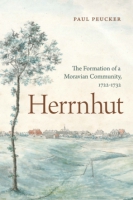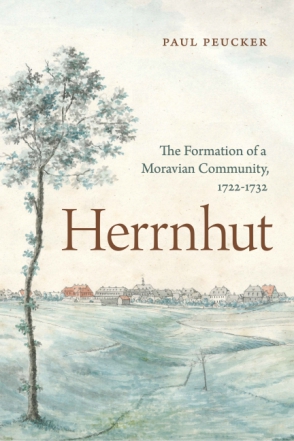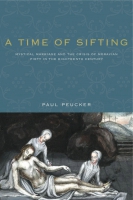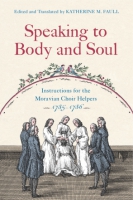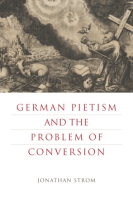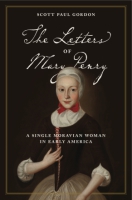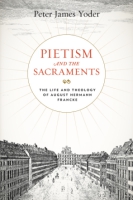Herrnhut
The Formation of a Moravian Community, 1722–1732
Paul Peucker
“Peucker’s work reveals the fascinating early development of the Herrnhut community under Zinzendorf’s leadership and protection.”
- Description
- Reviews
- Bio
- Table of Contents
- Sample Chapters
- Subjects
Written by one of the leading archivists of the Moravian Church, this book investigates the origins of Herrnhut. Paul Peucker argues that Herrnhut was intended to be a Philadelphian community, uniting “true Christians” from all denominations. It was a separatist movement, but it concealed its separatism behind the pretense of an affiliation with the Lutheran Church and behind a chosen historical identity, that of the renewed Unity of Brethren. Peucker’s analysis, based on hundreds of documents from archives in Germany and the United States, demonstrates how Herrnhut was able to grow and thrive despite existing regulations against new religious groups, uncovers Count Zinzendorf’s role in keeping Herrnhut outside the state church, and provides a new foundation from which to interpret the Moravian church’s later years.
Three centuries after Herrnhut’s founding, this intriguing history brings to light new information about the early years of the Moravian church. Peucker’s work will be especially valuable to students and scholars of eighteenth-century religion, Pietism, and Moravian history.
“Peucker’s work reveals the fascinating early development of the Herrnhut community under Zinzendorf’s leadership and protection.”
“Herrnhut is undoubtedly a very important study and a fascinating read. . . . The study testifies to an impressive knowledge of the sources and provides many—and often surprising—new insights.”
“Peucker’s work is a magnum opus at just over 200 pages, and it will be the essential book in its field.”
“How Zinzendorf and his community should be assessed was not only a matter of contention among his contemporaries but has remained controversial in research until today. Paul Peucker’s book represents a significant advance in scholarship on this array of questions, thanks to his unparalleled familiarity with the handwritten documents and the print sources.”
“An intriguing and insightful read for researchers and students alike. Not only does Herrnhut provide an excellent introduction to the contexts in which the Moravian community in Herrnhut came into being, but it also offers exciting new interpretive approaches and opens new avenues for further research.”
“Peucker’s volume is expertly nuanced and strenuously documented with archival sources, making a rich contribution to our understanding of Moravian origins.”
Paul Peucker is Director and Archivist at the Moravian Archives in Bethlehem, Pennsylvania. He is the author of A Time of Sifting: Mystical Marriage and the Crisis of Moravian Piety in the Eighteenth Century, also published by Penn State University Press.
List of Illustrations
Acknowledgements
List of Abbreviations
Editorial Note
Prologue: A Moravian Face Mask
Introduction
1. Berthelsdorf
2. The Plan
3. The Moravians
4. Dissent and Agreement
5. Beliefs and Ideals
6. Life in Herrnhut
7. The Herrnhut Model
Notes
Bibliography
Index
Download a PDF sample chapter here: Introduction
Mailing List
Subscribe to our mailing list and be notified about new titles, journals and catalogs.
